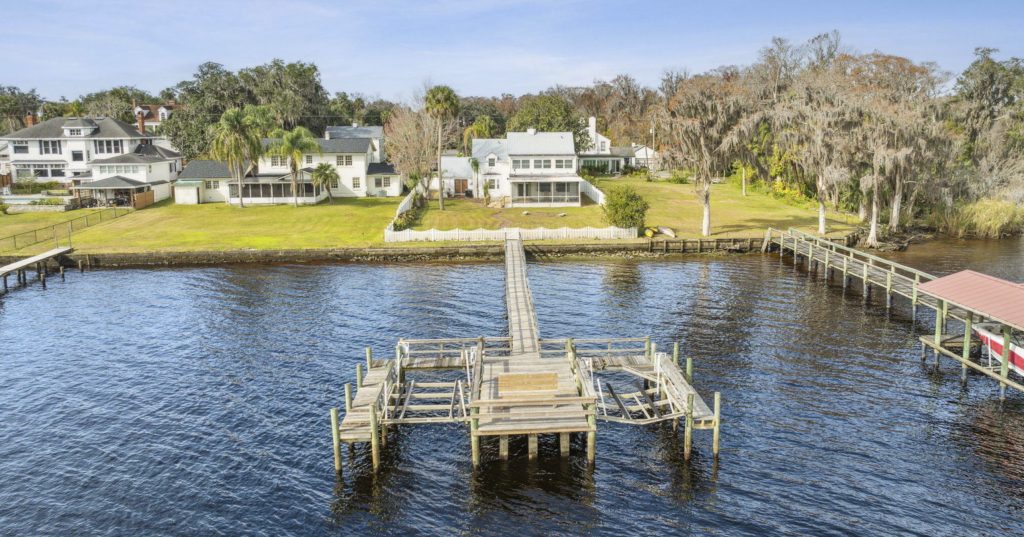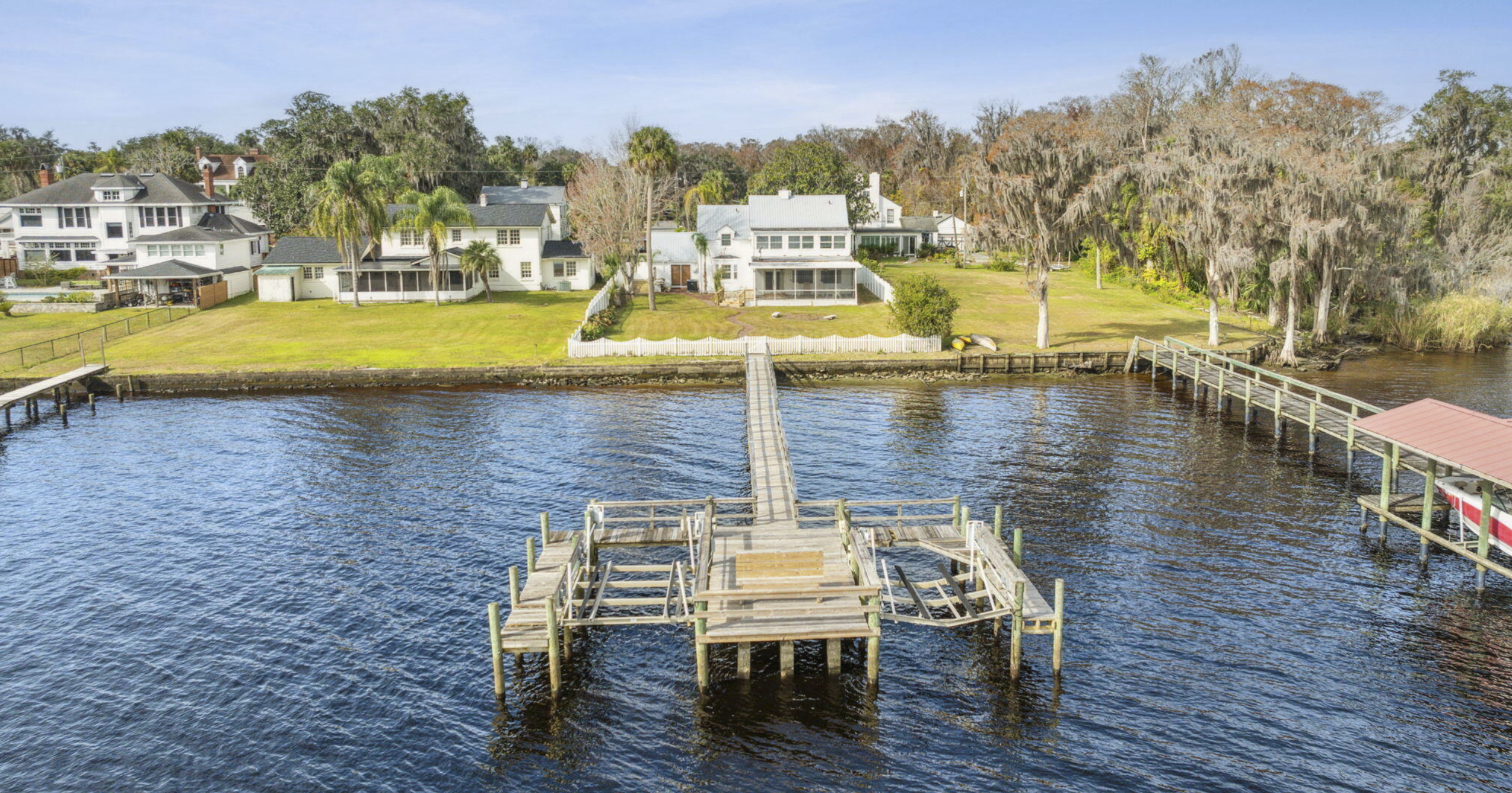Welcome back to Putnam Pathways, the blog from Coldwell Banker Ben Bates, Inc., Realtors—your essential resource for real estate in Putnam County, Florida. As we enjoy the warm days of August 2025, few things capture the essence of our area like the majestic St. Johns River. Stretching over 310 miles as Florida’s longest river, it winds through Putnam County, offering stunning waterfront properties that blend serene countryside living with endless outdoor adventures. Whether you’re an out-of-state relocator seeking a peaceful retreat or a local investor eyeing growth potential, riverfront homes here provide unparalleled access to nature, boating, and fishing—all while being centrally located via our “wagon wheel” to cities like Jacksonville and Orlando.
In this guide, we’ll walk you through everything buyers need to know about purchasing St. Johns River waterfront properties in Putnam County. From practical considerations like flood zones and inspections to the joys of fishing and boating, plus the smart investment angles, we’ve got you covered. With the local market showing steady interest—284 waterfront homes listed as of July 2025, with medians around $250,000 county-wide but premiums for riverfront—now’s a great time to explore. Our team, including waterfront specialist Margaret Zahner, is here to guide you every step.

The Allure and Essentials of Buying Riverfront Homes
Buying a waterfront property on the St. Johns River is more than a transaction—it’s an investment in a lifestyle. In Putnam County, these homes range from cozy manufactured retreats on canals (starting around $395,000 for turn-key options) to expansive custom builds on acres with direct river access, often exceeding $500,000 for prime spots in areas like East Palatka or Welaka. The river’s slow northward flow creates calm waters ideal for family homes, with many properties featuring private docks, boat ramps, and views of lush wetlands teeming with wildlife.
Start with location: Focus on towns like Palatka for urban-rural convenience, Crescent City for fishing vibes, or Welaka for secluded charm. Key factors include water depth (aim for at least 4-6 feet for boating), shoreline stability (check for erosion), and proximity to amenities—Palatka’s downtown is just minutes from many listings.
Flood zones are crucial in Florida. Most St. Johns River properties fall into AE or VE zones, requiring elevated structures and flood insurance (average $1,500-$3,000 annually). Use FEMA maps and hire a surveyor early to assess risks; recent 2025 updates emphasize resilience post-hurricanes. Inspections should cover seawalls, docks (permit checks via Putnam County Building Department), and environmental impacts like wetland buffers—Florida law mandates permits for any alterations.
Financing differs too: Expect higher down payments (10-20%) for waterfront, with lenders scrutinizing flood and environmental reports. Work with local experts for appraisals, as riverfront values can appreciate 3-5% annually in stable markets like ours.
HOA fees, if applicable (rare but growing in developments), cover shared docks or maintenance.
::
Fishing Access: A Angler’s Paradise Along the River
The St. Johns River in Putnam County is a fisherman’s dream, renowned for largemouth bass, black crappie, and catfish. Access is abundant: Public spots like Dunns Creek State Park offer ADA-compliant fishing platforms and canoe launches, while Mullet Lake Park and Lemon Bluff Road provide free ramps with no restrictions. In Palatka, the city’s free 24-hour ramps accommodate 70 vehicles, leading straight to prime river spots. Connected lakes like Crescent (15,960 acres) yield trophy bass, best caught near grass beds or drop-offs.
Regulations ensure sustainability: All anglers 16+ need a Florida freshwater fishing license ($17 annually for residents, $47 for non-residents), available online via FWC’s Go Outdoors app. Bass limits are five per day (minimum 14 inches, one over 22 inches), crappie at 25 per day (10-inch minimum). No closed seasons, but follow bag limits and avoid restricted areas. Charter captains often cover licenses, making guided trips ideal for newcomers—expect catches following baitfish schools in the lower river sections. For riverfront owners, private docks enhance access, but install fish attractors with permits to boost your backyard fishery.
::
Boating Regulations: Safe Navigation on the St. Johns
Boating is a way of life here, with the St. Johns offering calm, navigable waters for everything from kayaks to yachts. Regulations prioritize safety and ecology: All vessels need USCG-approved PFDs for each passenger (wearable for kids under 6), plus fire extinguishers, navigation lights, and sound devices. Operators born after 1987 require a Florida Boating Safety Education ID Card ($9.95 online course).
Speed zones vary: Idle-speed/no-wake in manatee areas (common in Putnam, especially winter), enforced by FWC patrols.
Bridges like the Memorial in Palatka have 65-foot clearance, no issues for most craft. Putnam’s county ramps (e.g., Highbanks Road) have no restrictions, but comply with Coast Guard rules—no anchoring in restricted zones like near U.S. Coast Guard Station Mayport. For riverfront buyers, ensure docks meet county setbacks (25 feet from property lines) and obtain DEP permits for new builds.
Eco-awareness is key: Avoid disturbing seagrass or manatees; fines start at $100 for violations.
Rentals come equipped, but owners should register vessels annually ($5-$100 based on size).
::
Investment Potential: Why Riverfront Properties Pay Off
Waterfront homes in Putnam County boast strong investment appeal in 2025. With county medians at $249,990 (up 4.2% YoY), riverfront premiums add 20-50% value, yet entry remains affordable compared to coastal Florida. Demand from retirees and remote workers drives 2-4% annual appreciation, fueled by eco-tourism and development like the Outer Beltway enhancing access. Rental potential shines: Vacation homes near fishing hotspots yield $1,500-$3,000 monthly, with platforms like Airbnb thriving on river views.
Long-term, sustainability boosts value—properties with solar docks or elevated designs command higher resale. Inventory of 255 waterfront listings suggests a balanced market, with “Hot Homes” selling fast. Investors eye land for builds, like 0.22-acre lots at discounts, in growing areas like Interlachen. Risks include insurance hikes (shop for policies), but low taxes and no state income tax offset them.
::
Spotlight on Expertise: Margaret Zahner, Your Waterfront Specialist
No guide would be complete without highlighting Margaret Zahner, a cornerstone of our team at Coldwell Banker Ben Bates. With over 38 years as a broker and more than 58 years living in Putnam County, Margaret specializes in St. Johns River and waterfront properties. A $126 million producer, she excels in relocations, consultations, and matching buyers to deep-water access homes or canal-front gems. Her local wisdom—knowing every tide, permit nuance, and hidden spot—ensures seamless transactions. Whether it’s a riverfront retreat in East Palatka or a lake-connected property in Welaka, Margaret’s dedication to Putnam’s charm makes her the go-to expert.
::
Ready to Dive In? Let’s Find Your Riverfront Dream
Waterfront living on the St. Johns River offers timeless appeal—peaceful escapes, recreational bliss, and solid returns. At Coldwell Banker Ben Bates, our team—including Marc Spalding (36+ years in commercial and farms), Erin Fortner (23+ years knowing every nook), and Margaret Zahner—is ready to navigate your purchase.Call (386) 328-6716 or visit benbates.com today. Subscribe to Putnam Pathways for more. Your river adventure awaits!
::
Mark Paulda
Imagine Media

 Facebook
Facebook
 X
X
 Pinterest
Pinterest
 Copy Link
Copy Link


